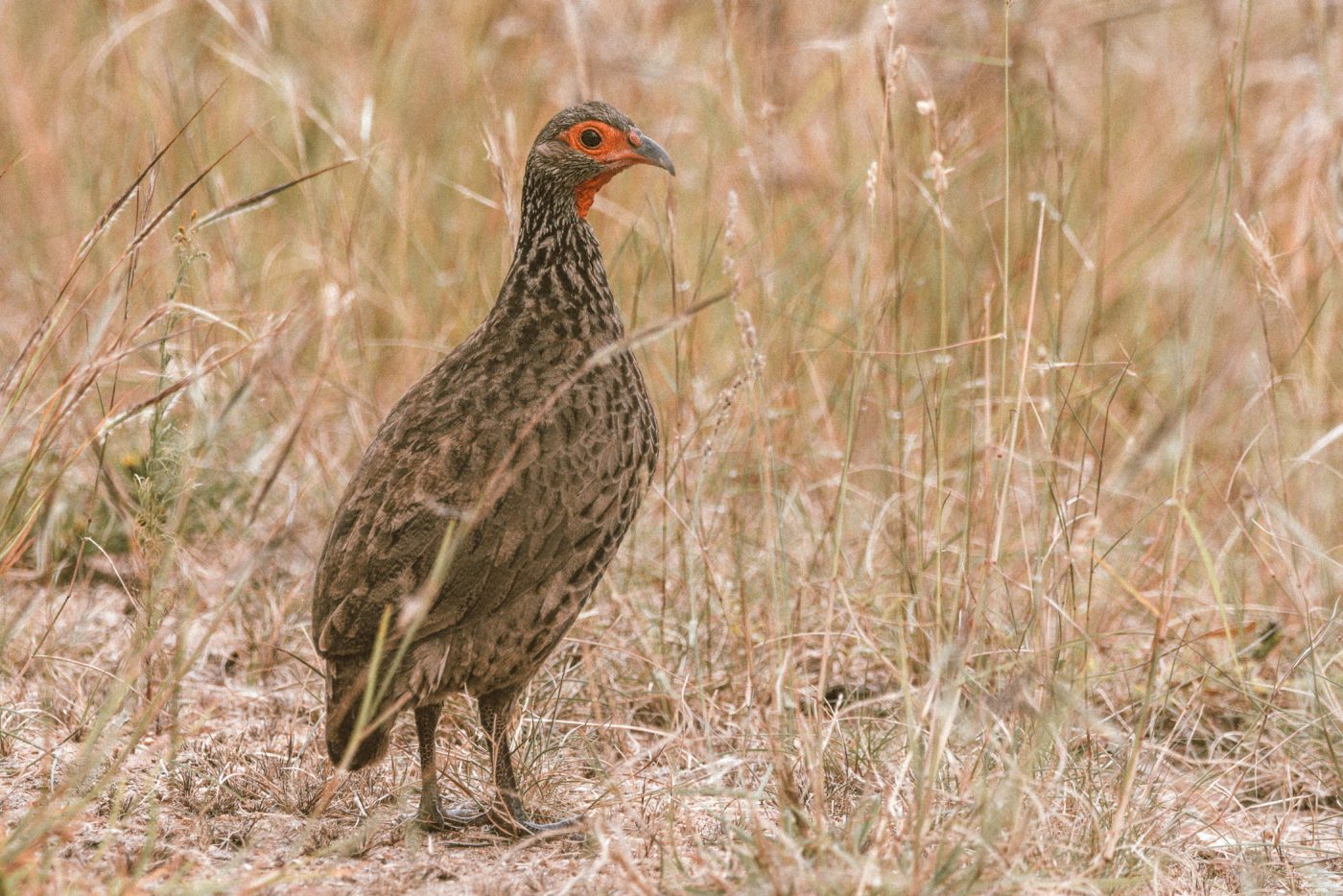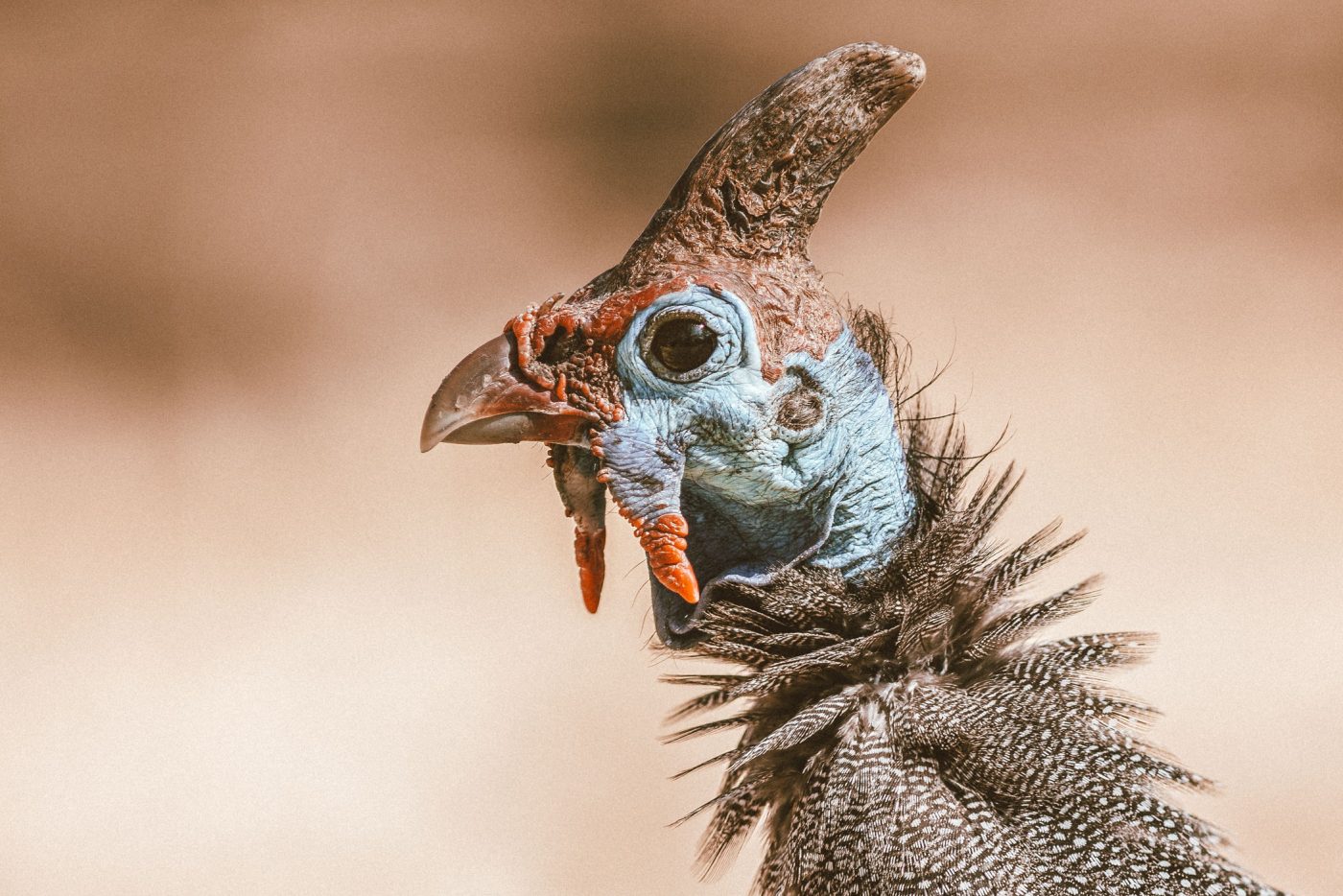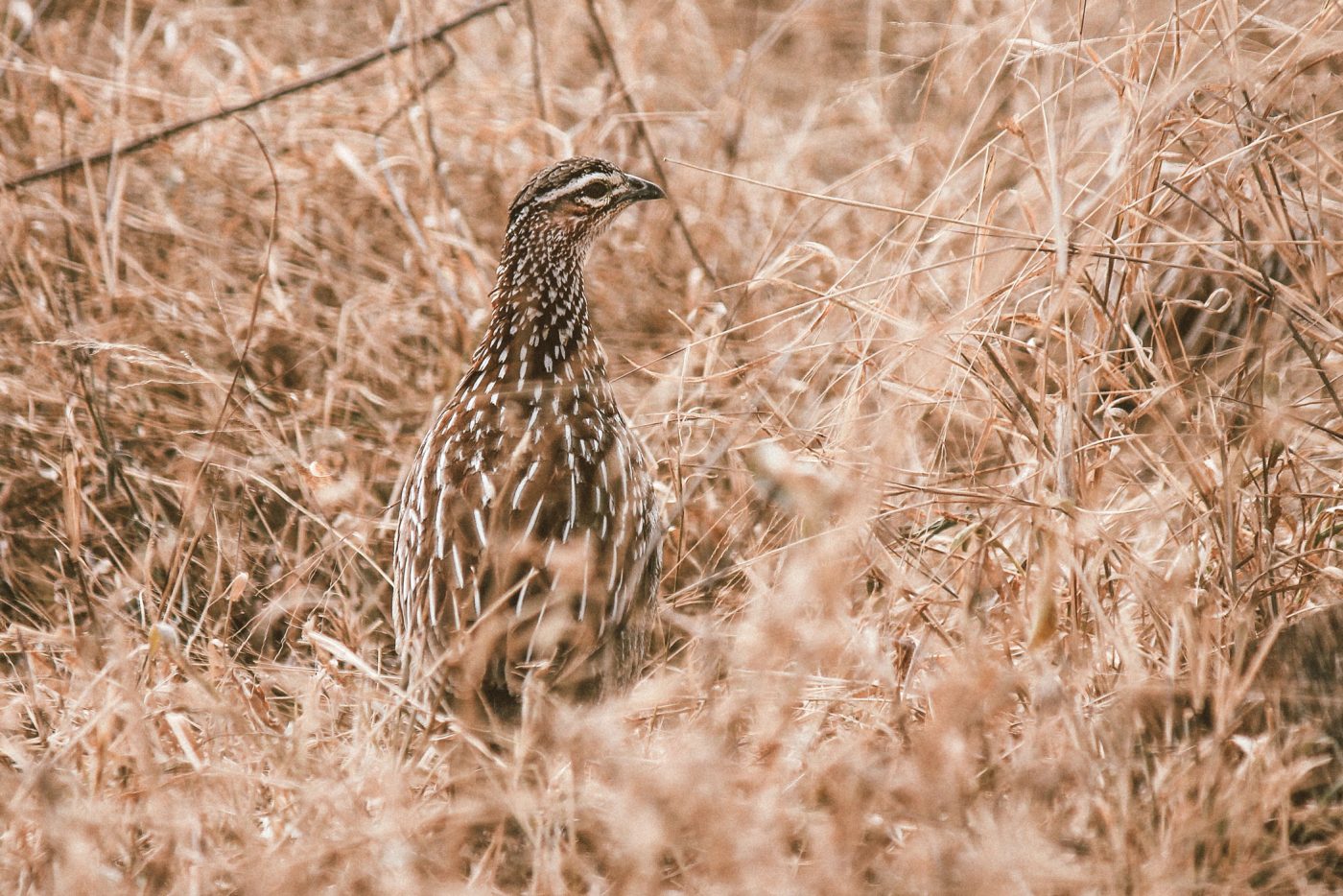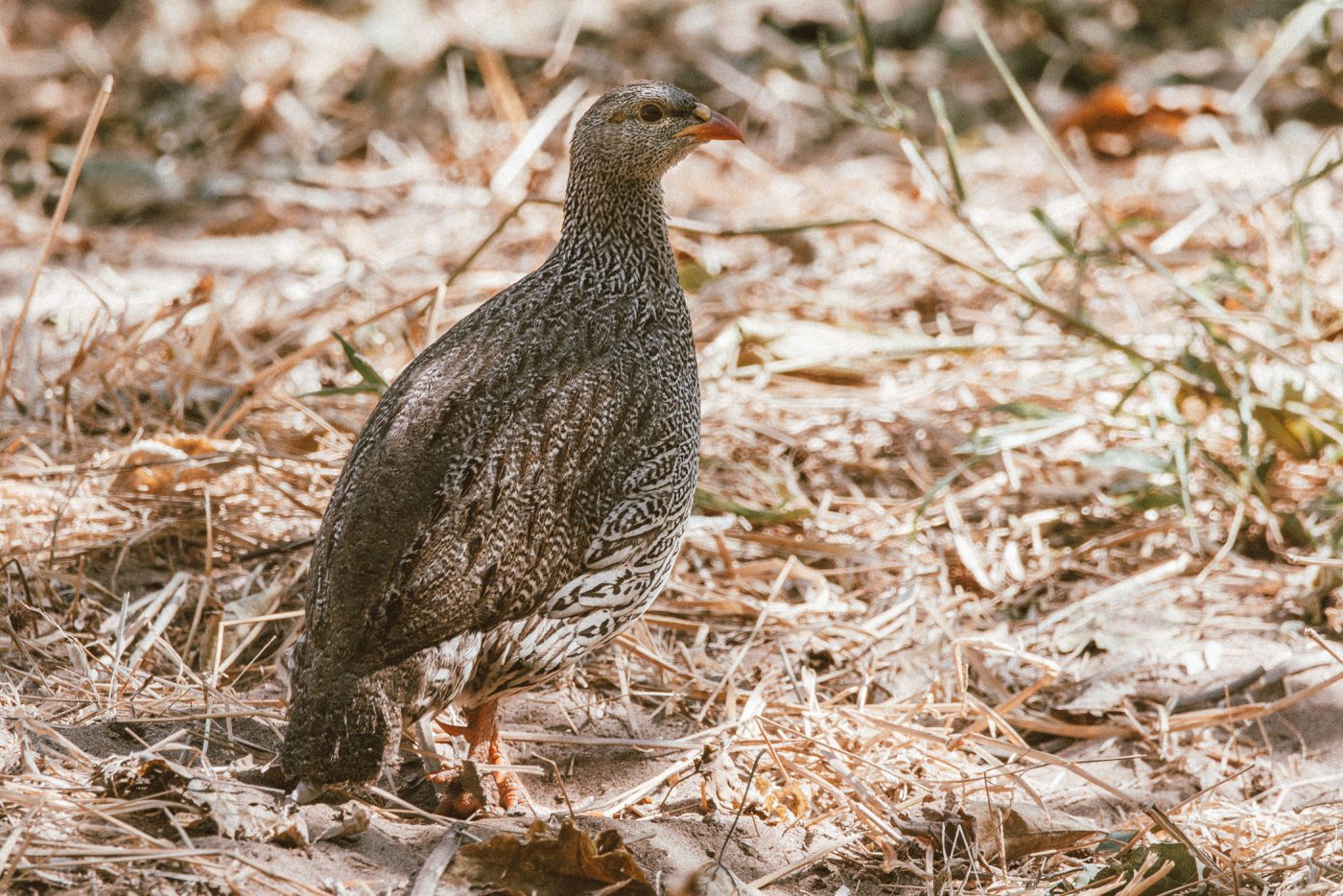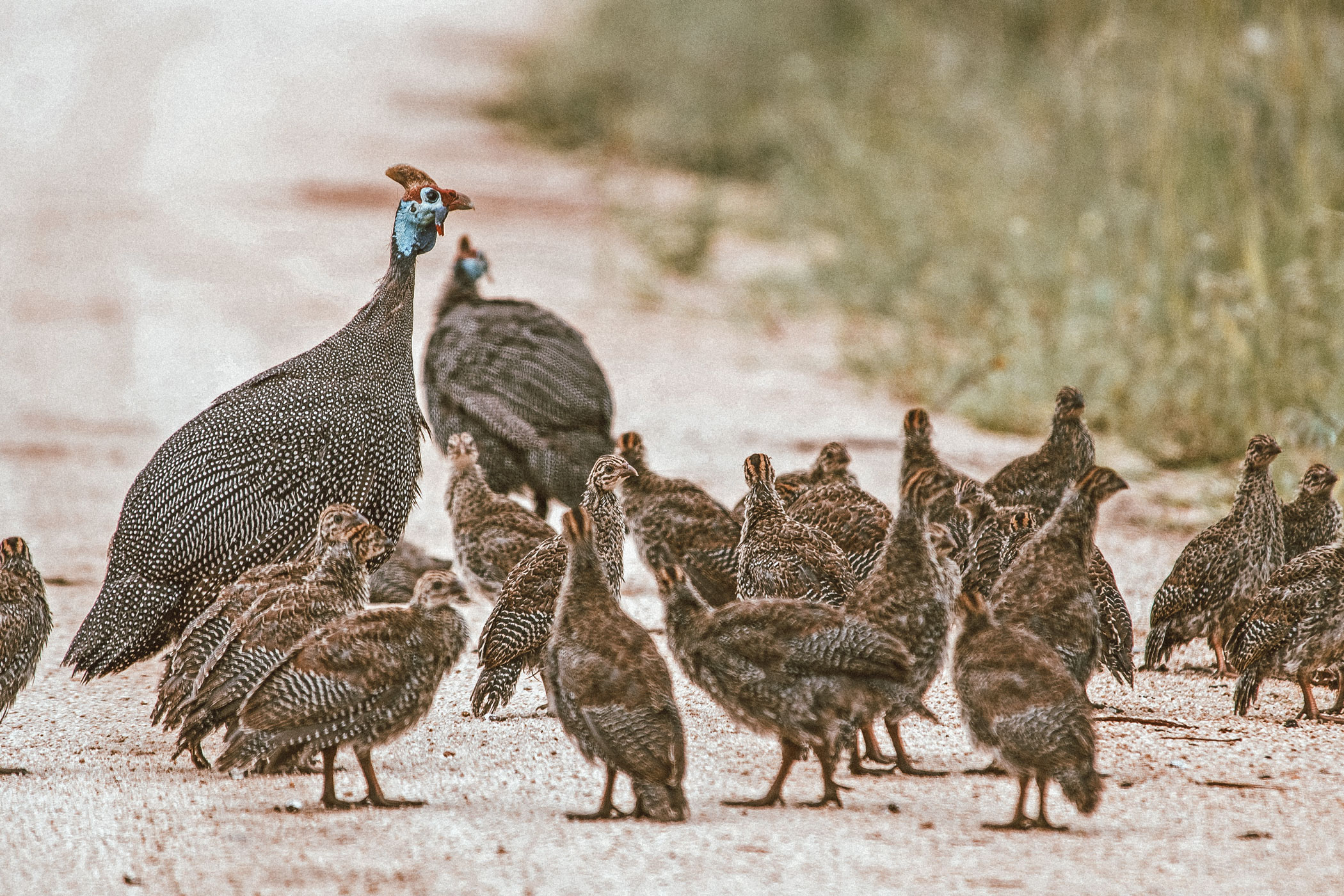Galliformes.
(order Galliformes, from Latin gallus ,rooster‘)Images: Claudia Fakler, Pixabay, Wikimedia commons
Common names are gamefowl or gamebirds, landfowl, gallinaceous birds, or galliforms. Galliforms and waterfowl (order Anseriformes) are collectively called fowl.
Non-passerines
Spurfowls / Francolins
& Guineafowls
(fam. Phasianidae & fam. Numididae)
Birds in the Spurfowl / Francolin & Guineafowl families, are heavy-bodied, terrestrial species renowned for their cryptic camouflage, which allows them to blend effortlessly into their natural habitats. These birds are capable of perching, though they spend much of their time on the ground.
Their hind toe is small and raised, while their strong, muscular legs are perfectly adapted for running and scratching the ground or herbivore dung in search of food. These traits make them efficient foragers and resilient inhabitants of their environments.
Many species are known for their loud, distinctive calls, used to mark territory or signal alarm.
Francolins are generally slightly smaller than their spurfowl relatives, but both share similar adaptations for survival. Adult males are distinguished by the presence of sharp, horny spurs on the back of each leg, which they use for territorial disputes and fighting. Guineafowls however lack leg spurs — males and females look similar, and unlike the more solitary or paired Spurfowls and Francolins they rely more on flock behaviour than individual combat.
Habitat
These birds thrive in open grasslands, savannas, and scrublands, where their camouflage keeps them hidden from both predators and keen-eyed birdwatchers.
Feeding strategy
Primarily herbivorous (feeding on rootlets, shoots, and seeds), they also have a slightly omnivorous side — chicks snack on insects for protein. Their short, thick, slightly hooked beak is perfect for digging and pecking.
Breeding Strategy
Monogamous and secretive, they nest in simple ground scrapes, and their precocial chicks are up and running within hours of hatching — ready to face the wild.

